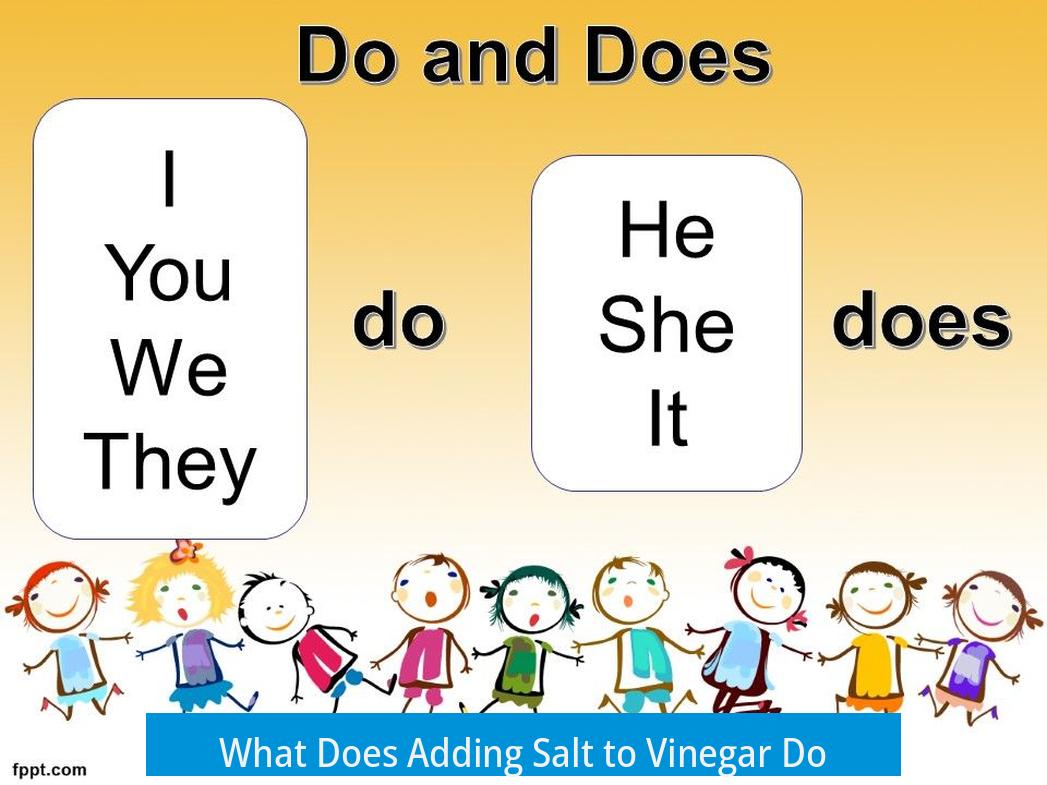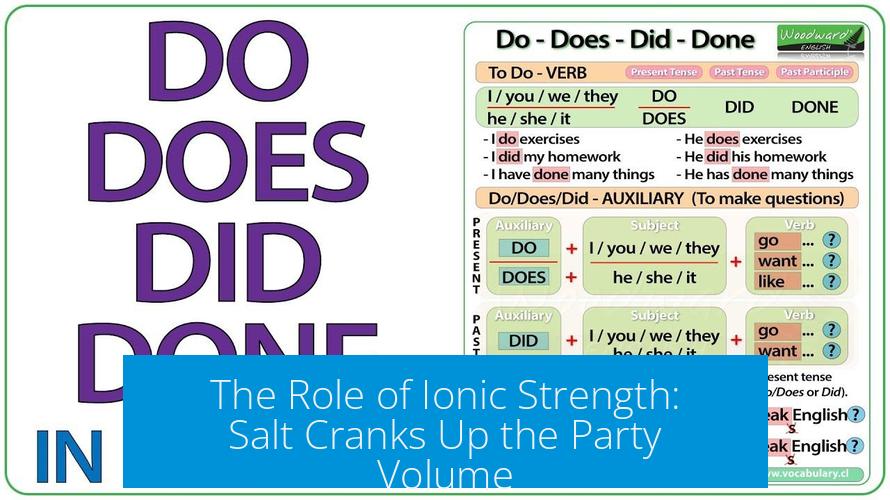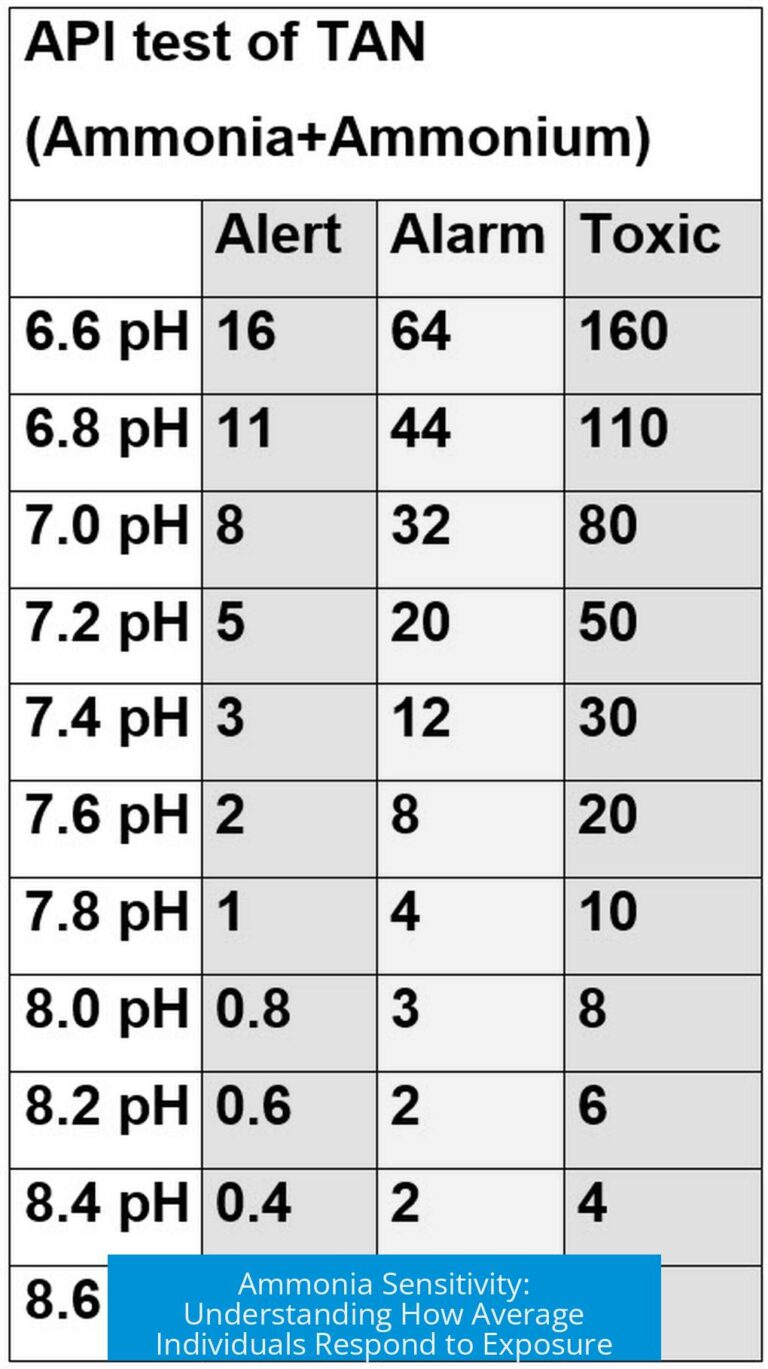What Does Adding Salt to Vinegar Do?

Adding salt to vinegar increases the ionic strength of the solution, which in turn slightly strengthens the acetic acid in the vinegar without producing hydrochloric acid. This change affects the solution’s chemical environment but does not create new acids or drastically alter the acidity.
Effect on Ionic Strength
Ionic strength measures how much ions influence each other within a solution. Adding salt introduces more ions, such as sodium (Na+) and chloride (Cl−), raising the overall ionic strength. This increase alters the interactions among ions.
With higher ionic strength, acetic acid (CH3COOH) behaves as a slightly stronger acid. This means the acid more readily donates protons (H+), though this change is subtle and does not produce new acids.
Chemical Reactions and Common Misconceptions
Some believe salt and vinegar can combine to form hydrochloric acid (HCl). However, this does not occur. The pKa values clarify this: HCl has a pKa around -6.3, meaning it almost fully dissociates in water. Acetic acid has a pKa near 4.8, so it only partially dissociates depending on the solution’s pH.
Salt addition does not change these fundamental acid properties. The vinegar remains acetic acid, and HCl is not formed because no chlorine atoms are freed to bond directly with hydrogen ions. Dissociation levels remain governed by their intrinsic acid strengths.
Practical Applications

- Culinary Use: Salt and vinegar is a popular flavor combination, especially for dishes like fish and chips. The flavor impact comes from salt’s ability to enhance taste and vinegar’s acidity—not from chemical changes producing new compounds.
- Cleaning Inquiry: People sometimes ask whether vinegar and salt can remove stains. While vinegar is a weak acid that can break down some stains, salt simply adds ionic strength but does not provide a distinct chemical cleaning benefit on its own.
Summary of Key Points
- Salt increases ionic strength by adding ions to vinegar.
- This makes acetic acid slightly stronger but doesn’t create hydrochloric acid.
- pKa values show acetic acid dissociation is pH-dependent; HCl is fully dissociated.
- Salt and vinegar together mainly impact flavor in cooking.
- Chemically, adding salt to vinegar changes ion interactions but not acid types.
What Does Adding Salt to Vinegar Do? Unpacking the Science and Surprises
Adding salt to vinegar increases the ionic strength of the solution, which makes acetic acid slightly stronger—but it does not create hydrochloric acid. That’s the short answer. Now, let’s dive into what this really means and why it matters.
You might have heard that when you mix salt with vinegar, they create some chemical magic, maybe even hydrochloric acid. Spoiler: this is a misconception. Instead, the action is subtler, residing in the dance of ions in the solution. Think of ionic strength as how crowded and electric a party the ions are having in your little kitchen concoction.
The Role of Ionic Strength: Salt Cranks Up the Party Volume

Ionic strength is essentially how much individual ions “feel” each other in a solution. When you add salt—commonly sodium chloride (NaCl)—to vinegar, you’re adding a flood of sodium (Na+) and chloride (Cl-) ions. These extra ions increase the total ionic strength.
Why does this matter? Because acetic acid, the main acidic player in vinegar, partially dissociates in water into acetate ions and hydrogen ions. The behavior of these ions changes when there are more ions buzzing around. A higher ionic strength means the solution can better stabilize ions, making acetic acid dissociate just a bit more completely, thus slightly increasing its effective acidity.
So, adding salt makes acetic acid a touch stronger—enough to make a small chemical, but practically noticeable, difference. In other words: the soup gets saltier, a little sharper.
Clearing Up Chemical Confusion: No HCl in Sight
Despite the “sour and salty” combo, vinegar and salt together do not produce hydrochloric acid (HCl). Here’s why that’s big news:
- The pKa for hydrochloric acid is around -6.3, which means HCl fully dissociates in water and is way stronger than acetic acid.
- Acetic acid’s pKa is about 4.8—meaning it is a weak acid and only partially dissociates.
So mixing sodium chloride (salt) into acetic acid (vinegar) won’t magically flip the chemistry to HCl. The ions from the salt don’t combine to form HCl; they coexist, influencing the solution’s ionic atmosphere but not creating new strong acids. It’s like adding more guests to the party, not changing the party theme.
Why Does pKa Matter? A Quick Refresher
If you recall your high school chemistry escapades, pKa measures how strongly an acid holds onto protons before dissociating. Low pKa means a strong acid; high pKa means a weaker one.
Acetic acid’s 4.8 pKa means only some molecules release hydrogen ions in water, while HCl’s super low pKa ensures it completely dissociates into ions. This fully explains why salt and vinegar don’t suddenly brew up HCl.
Culinary Delight: Why Salt and Vinegar Are a Classic Duo

Beyond the science, salt and vinegar huddle to create a flavor explosion. The slight increase in ionic strength actually accentuates the sharp tang of vinegar and the savory salty backbone. For example, that golden crispy fish and chips meal practically demands a splash of this combo.
Salt tunes the vinegar’s taste without changing the core chemistry much—it’s a superstar seasoning tag team. This idea also explains the popularity of salt and vinegar chips, where the combined effect enhances flavor perception, making your snack crunch all the more addictive.
Can Salt and Vinegar Team Up for Stain Removal?
Here’s a fun question: Could mixing distilled white vinegar with iodized salt zap a stubborn stain from your clothes? Theoretically, vinegar’s acidity helps break down mineral and organic deposits, and salt might gently scrub or alter ionic interactions.
However, no solid science confirms salt + vinegar is a magic stain remover beyond their separate uses. Vinegar alone can tackle some stains, and salt can act as a mild abrasive or absorb some moisture. So, combining them could help in a pinch but isn’t guaranteed superhero cleaning power.
Real-World Application and Advice
- If you’re tweaking a recipe, adding salt to vinegar enhances taste by subtly increasing acetic acid’s strength.
- Don’t expect any new chemical beast; no hydrochloric acid comes out of the mix.
- For cleaning, vinegar does great on its own, and salt may assist slightly—but don’t rely on this combo for tough stains.
- Experiment safely in the kitchen and for cleaning, using dilute solutions and spot tests.
Wrapping It Up: The Salt and Vinegar Chemistry Explained
In sum, adding salt to vinegar is less about fireworks and more about fine tuning the ionic environment in the mix. This turns acetic acid into a slightly stronger player, but with no magic acid transformations.
This modest shift influences flavor perception dramatically, which is why the duo shines in culinary traditions. It also sparks curiosity about household hacks—some confirmed, some just hopeful experiments.
So next time you dash salt into your vinegar, relish the quiet chemistry hard at work, making your snack taste just a bit sharper and your kitchen adventures a bit more interesting. Ever wondered what other simple kitchen combos hide neat science? Go on, stir your curiosity!
What effect does adding salt have on the strength of vinegar?
Adding salt increases the ionic strength of the vinegar solution. This makes the acetic acid in vinegar slightly stronger by influencing how ions interact within the solution.
Does mixing salt with vinegar produce hydrochloric acid (HCl)?
No, adding salt to vinegar does not produce hydrochloric acid. This is a common misconception; the reaction with salt does not create HCl.
How does salt affect the acidity of vinegar?
Salt affects ionic strength and can influence acetic acid’s dissociation, but vinegar’s acidity mainly depends on its pH and acetic acid concentration, not salt content.
Can salt and vinegar be used together for stain removal?
Some people wonder if salt and vinegar can remove stains like dark spots on clothes. While vinegar is a mild cleaner, the role of salt in stain removal is unclear and not well studied.
Why does salt improve the flavor when combined with vinegar in cooking?
Salt enhances vinegar’s flavor by increasing ionic strength, which affects taste perception. This combination is popular in dishes like fish and chips for its balanced flavor.





Leave a Comment